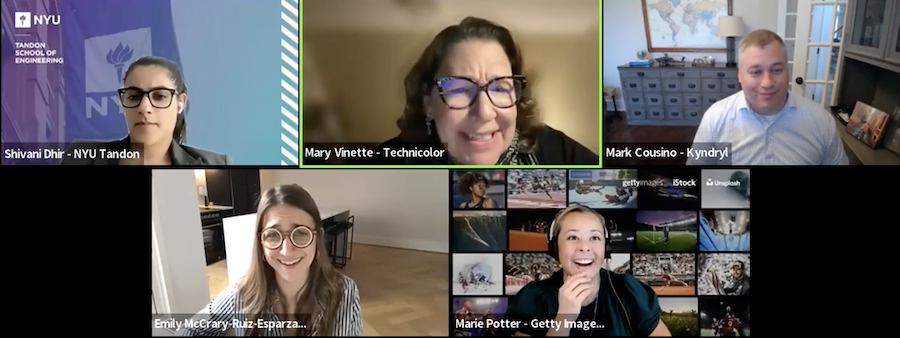How Employee Coaching Has Evolved to Boost Inclusion


Forget the typical images of corporate coaching: A senior executive dispensing theoretical advice to a shiny subordinate hungry for a small measure of wisdom that will propel his career. Others might think of an executive enjoying lunch with their coach—perhaps a CEO emeritus—who imparts the secrets of corporate ladder-climbing.
Or maybe your image of a coach is this: An overloaded middle manager drafted into compulsory coaching duty, offering unwanted and unsolicited advice to an intern who just wants to know if this six-week stint will get him hired.
These kinds of coaching have produced homogenous leadership, tired coaches, and wasted time. HR leaders are throwing out the book on coaching and reworking it for a greater purpose: inclusion.
As the value of diversity, equity, and inclusion becomes clear to business success, leaders in DEI and learning & development are working together to build coaching and mentorship programs that don’t just produce the same old results, and don’t sap the energy of the coach or the ones being coached, but actually provide value to everyone, making way for the proverbial rising tide.
During From Day One’s April virtual conference on how employee motivation can supercharge learning and development, four panelists, who represent companies of creative and technical professionals at the top of their fields, participated in a panel discussion about how employee coaching can be used for inclusion.
Effective Coaching Doesn’t Require an Appointment
Employers don’t need to mount a structured coaching program in order to be effective, said panelists. Though formal programs can help get a company started, effective coaching doesn’t require calendar invites or evaluation rubrics.
Panelist Marie Potter, the senior director of culture and development at media company Getty Images, said her company doesn’t have a formal internal coaching program in which coaches and coachees sign up for sessions. Rather, the company tries to instill the spirit of the thing among its staff, and it starts with a unit on coaching in its leadership development program.
“We believe that every people manager, every leader, has the opportunity to sit in that coaching relationship with their teams,” Potter said. “This has helped our managers have better conversations with employees at the point of need, whether a one-on-one turns into a coaching session, or whether a performance development conversation boasts some coaching.”

“I’m a big fan of informal programs because you’re not limited by who you can engage as a coach,” said panelist Mark Cousino, the VP of learning and effectiveness at IT infrastructure company Kyndryl. “When you get into informal coaching, it’s more about who can help me solve a particular challenge.”
If coaching is a means of making better decisions, everyone is capable of being a coach. This way of thinking opens the door for more people in your organization to contribute to the growth of the team and of the company.
Coaches can be found almost anywhere in an organization, not just among executives and senior leaders, says Cousino. “Don’t have them all be your age, don’t have them all look like you. Get coaches and perspectives from all kinds of places, because then that’s really what helps open your mind and gives you a better appreciation for different ways of thinking.”
One might look to different “coaches” depending on the problem at hand. “I have somebody that helps me connect the dots that I can’t see are connected. I have somebody that helps me think through decisions I need to make,” he said.
Coaching Is No Longer Prescriptive
Mary Vinette, who is the global head of learning and development at creative production company Technicolor, has more than a decade of experience in employee training and development. She said the corporate approach to coaching—its purpose and who is considered a coach—is changing.
Employers are recognizing the need for coaching that supports better decision-making rather than simply reinforces a corporate “way.” Vinette describes it as “coaching for what it’s meant to be: for human beings to find their own best solutions to whatever they’re going through.”
In this way, coaching can be used to solve a range of problems, like when a first-time manager needs help running a large team or a business unit needs ideas for ways to recover sinking revenue.
With an Open Mind, Coaching Becomes a Means for Advocacy
Shivani Dhir, the assistant dean of digital learning at the NYU Tandon School of Engineering, works with employers that are investing in their workforce with degree and non-degree corporate upskilling.
Coaching and mentorship work in concert with skill development, she says. “You’re at this pivotal point and you’re developing new skills—what are you going to do with them?” Dhir said. “How are you going to go back and apply them in your organization? How are you going to navigate whatever new opportunity this brings about within your organization?”
When everyone in an organization, not just those at the top of the pecking order, can see themselves as a coach, there’s room for those typically excluded from old-school corporate coaching programs to rise, grow, and bring others along with them.
Dhir said that Tandon coaches students to return to their organizations to make change, “to be the advocates within their organizations, and identify talent across representation. These leaders have the power and the leverage within the organizations to be able to look for the right signs, look for what barriers to remove within.”
Emily McCrary-Ruiz-Esparza is a freelance reporter and From Day One contributing editor who writes about the future of work, HR, recruiting, DEI, and women's experiences in the workplace. Her work has appeared in The Washington Post, Fast Company, Quartz at Work, Digiday’s Worklife, and Food Technology, among others.
The From Day One Newsletter is a monthly roundup of articles, features, and editorials on innovative ways for companies to forge stronger relationships with their employees, customers, and communities.